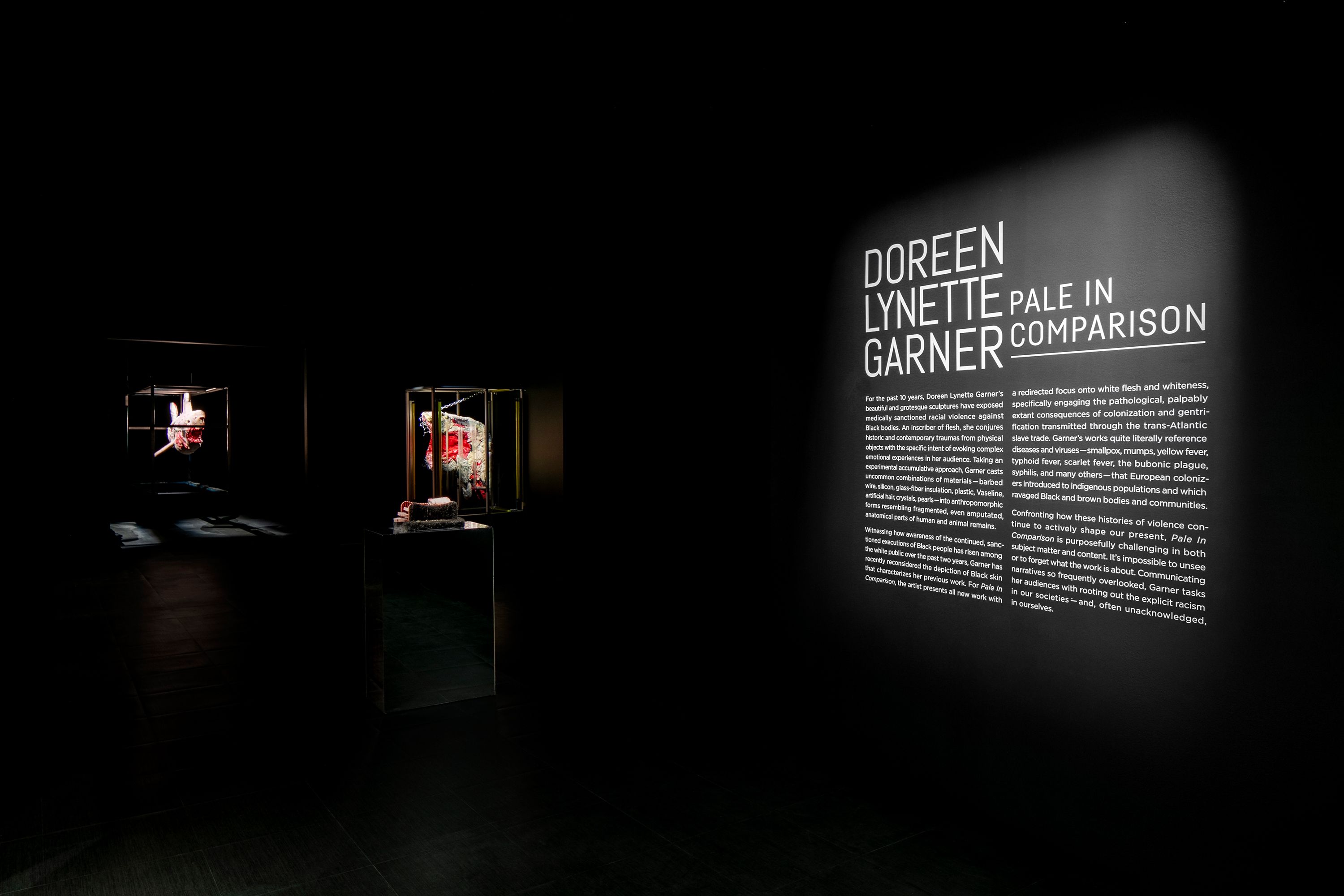
For the past 10 years, Doreen Lynette Garner’s beautiful and grotesque sculptures have exposed medically sanctioned racial violence against Black bodies. An inscriber of flesh, she conjures historic and contemporary traumas from physical objects with the specific intent of evoking complex emotional experiences in her audience. Taking an experimental accumulative approach, Garner casts uncommon combinations of materials — barbed wire, silicon, glass-fiber insulation, plastic, Vaseline, artificial hair, crystals, pearls — into anthropomorphic forms resembling fragmented, even amputated, anatomical parts of human and animal remains.
Witnessing how awareness of the continued, sanctioned executions of Black people has risen among the white public over the past two years, Garner has recently reconsidered the depiction of Black skin that characterizes her previous work. For Pale In Comparison, the artist presents all new work with a redirected focus onto white flesh and whiteness, specifically engaging the pathological, palpably extant consequences of colonization and gentrification transmitted through the trans-Atlantic slave trade. Garner’s works quite literally reference diseases and viruses — smallpox, mumps, yellow fever, typhoid fever, scarlet fever, the bubonic plague, syphilis, and many others — that European colonizers introduced to indigenous populations and which ravaged Black and brown bodies and communities.
Confronting how these histories of violence continue to actively shape our present, Pale In Comparison is purposefully challenging in both subject matter and content. It’s impossible to unsee or to forget what the work is about. Communicating narratives so frequently overlooked, Garner tasks her audiences with rooting out the explicit racism in our societies — and, often unacknowledged, in ourselves.
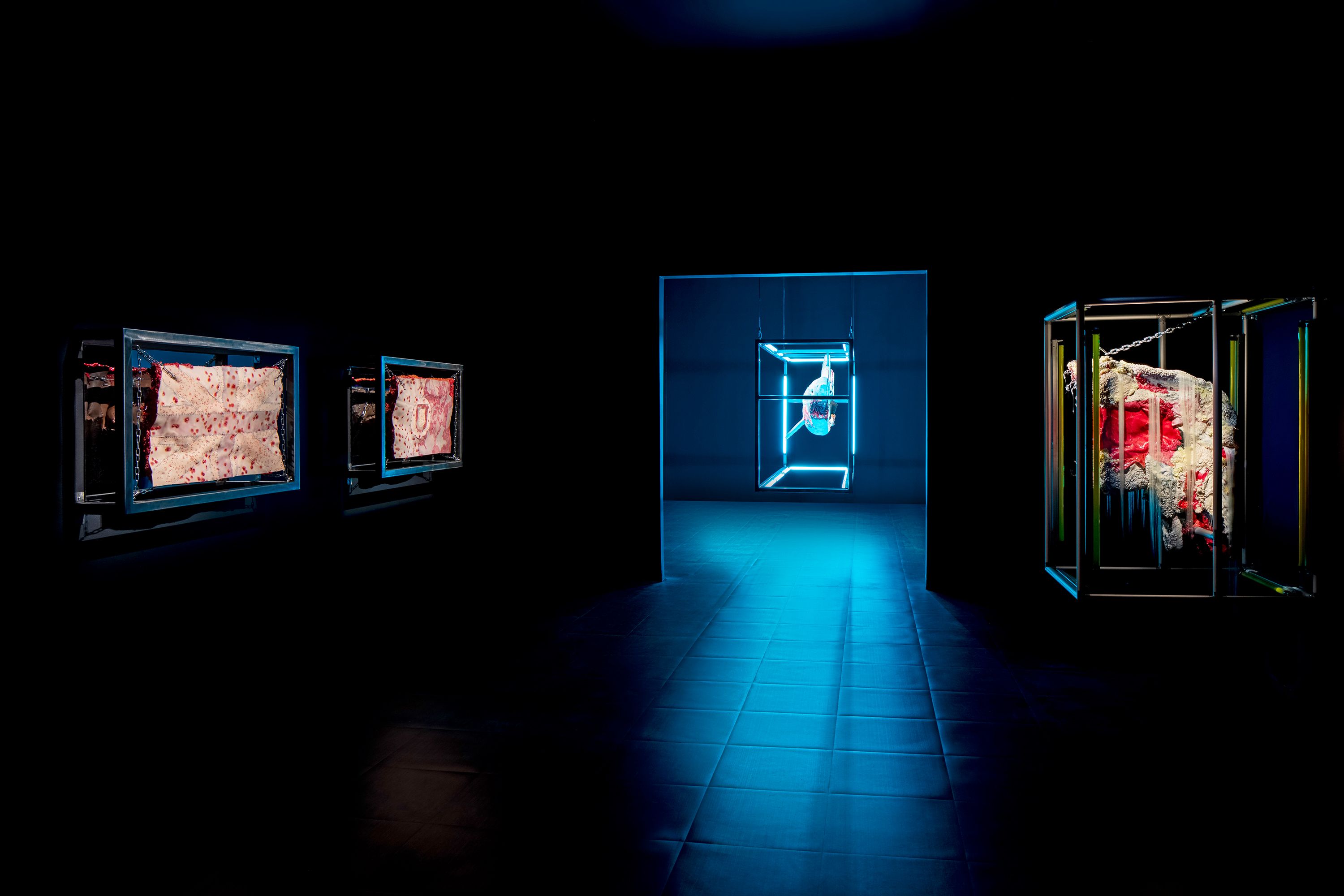
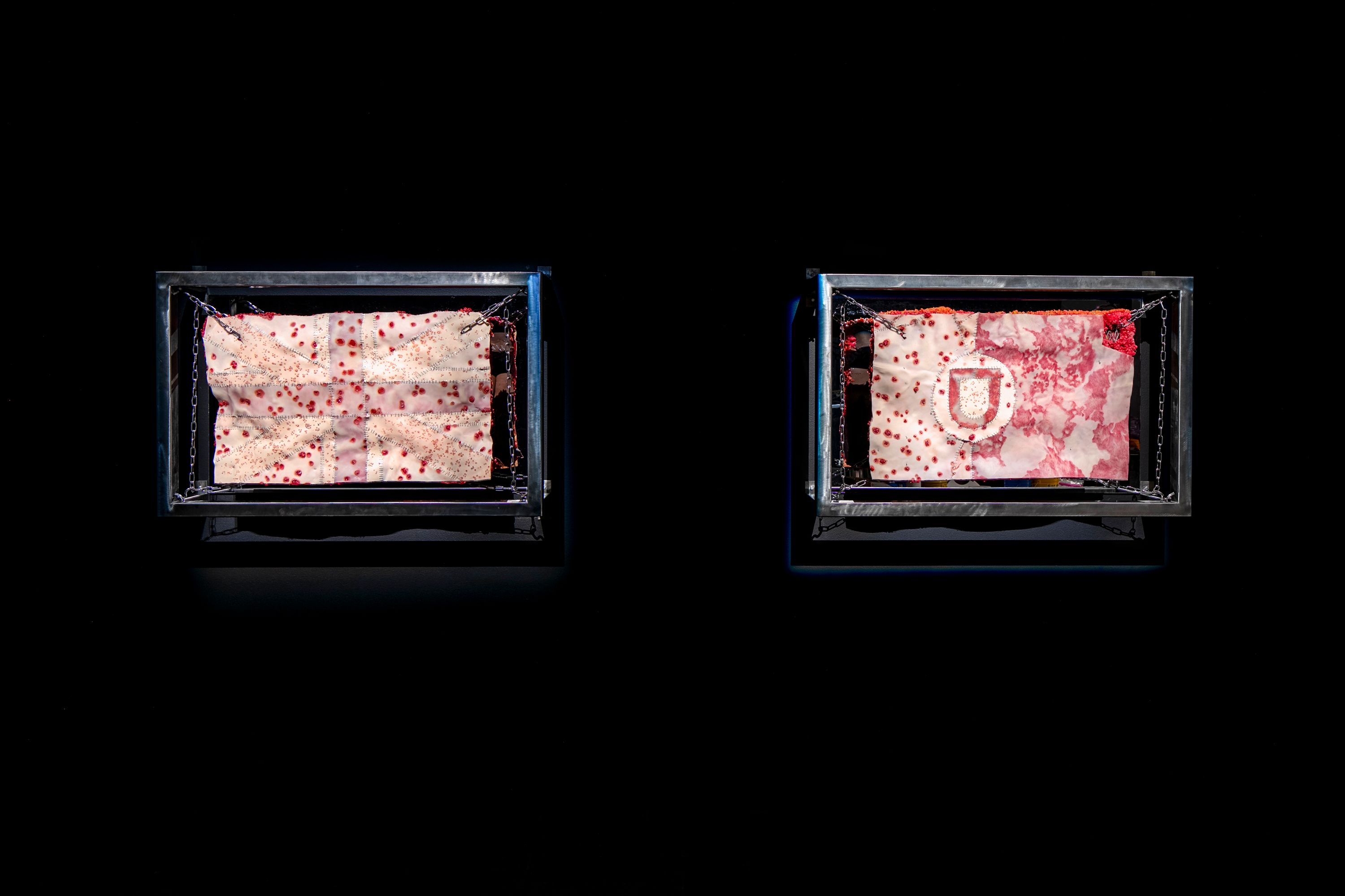
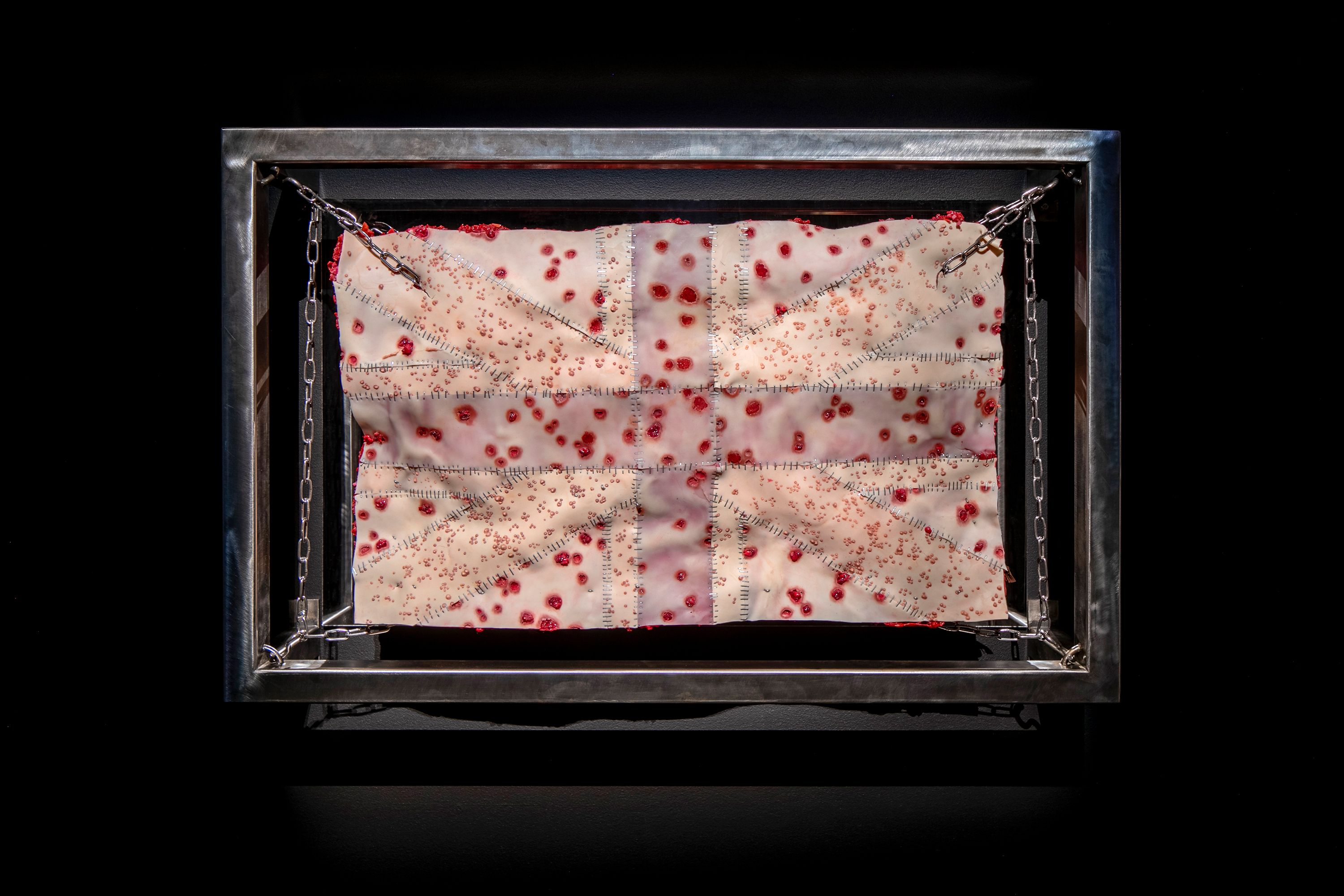
silicone, staples, tattoo ink, glass beads, urethane foam, steel, hair weave
36 x 50.5 x 10 in
91.5 x 127.5 x 25.5 cm

silicone, urethane foam, pearls, Swarovski crystals, barbed wire, hair weave, fluorescent light, aluminum, steel
60.5 x 36 x 45 in
153 x 91.5 x 113.5 cm
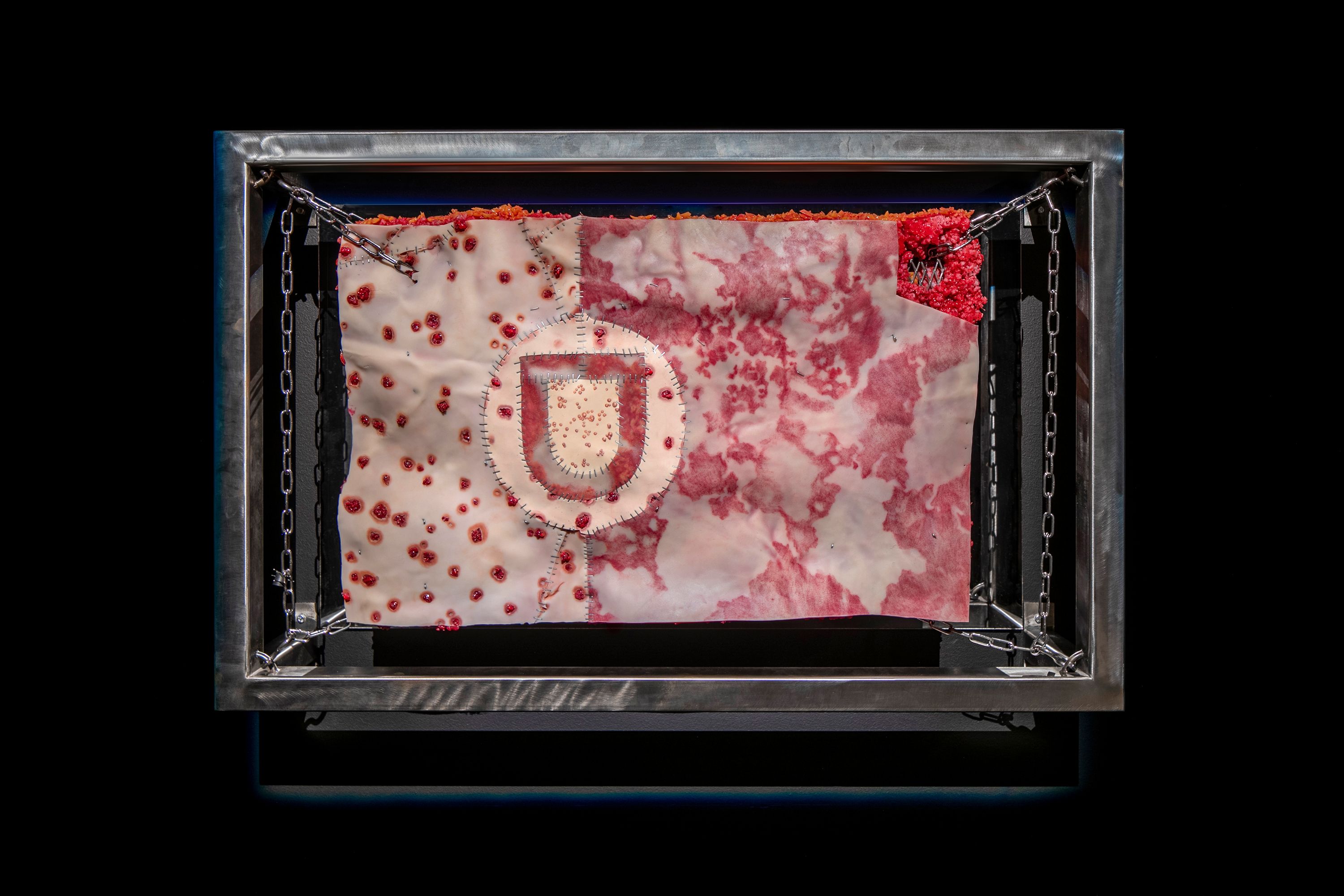
silicone, staples, tattoo ink, glass beads, urethane foam, steel, hair weave
36 x 50.5 x 10 in
91.5 x 127.5 x 25.5 cm
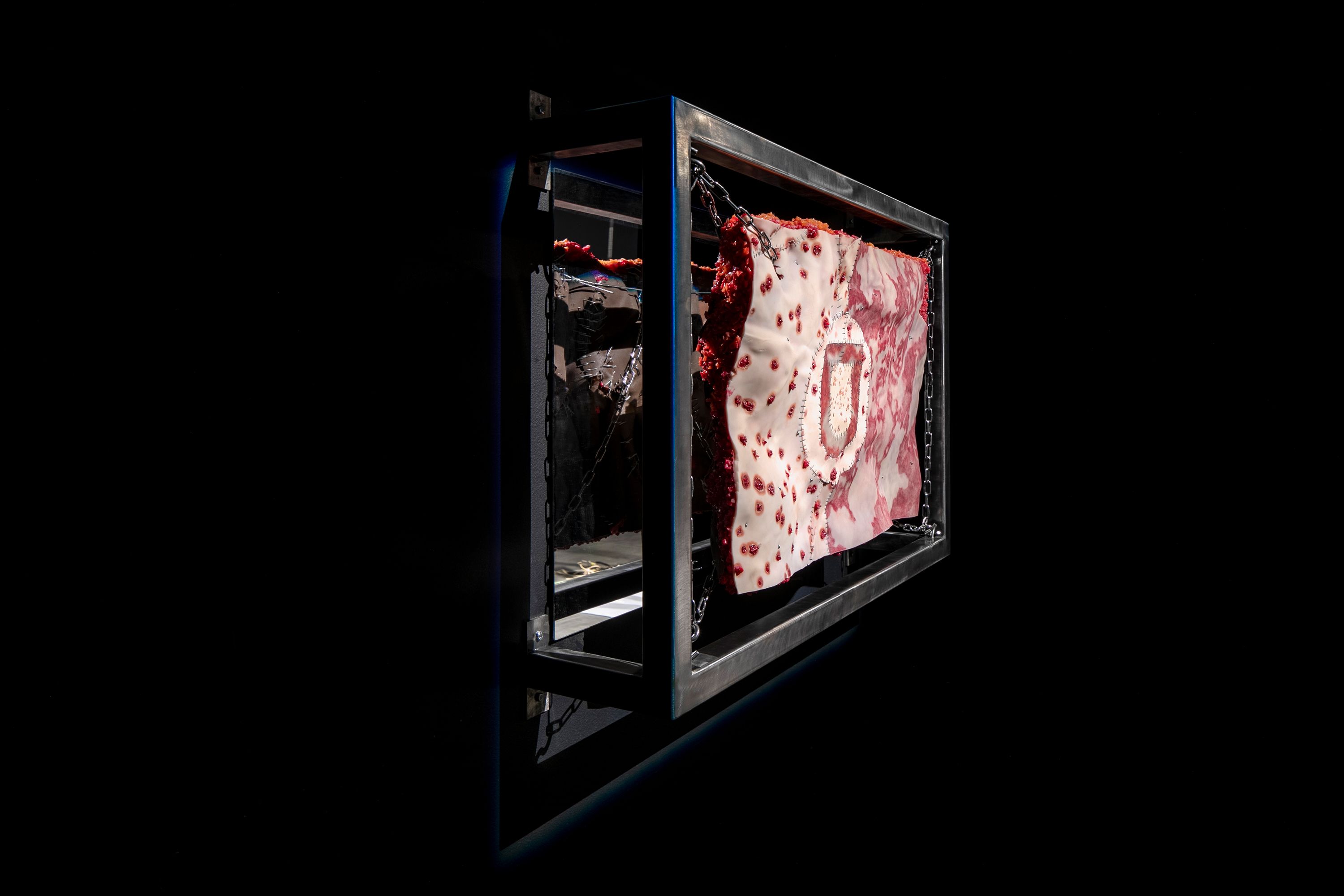
silicone, staples, tattoo ink, glass beads, urethane foam, steel, hair weave
36 x 50.5 x 10 in
91.5 x 127.5 x 25.5 cm

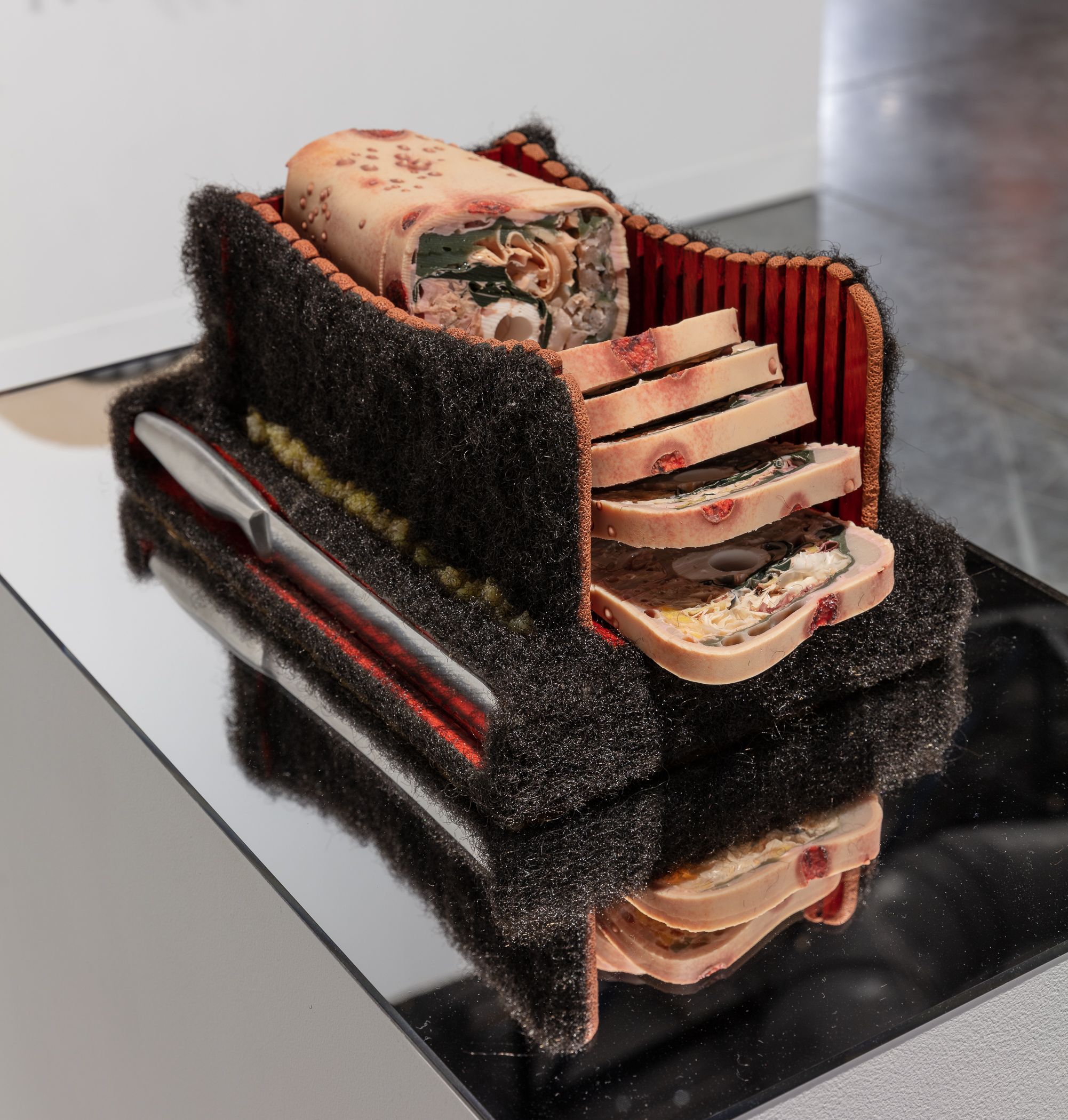
bamboo, resin clay, hair weave, acrylic, silicone, tattoo ink
7 x 15 x 9.5 in
18 x 38 x 24 cm
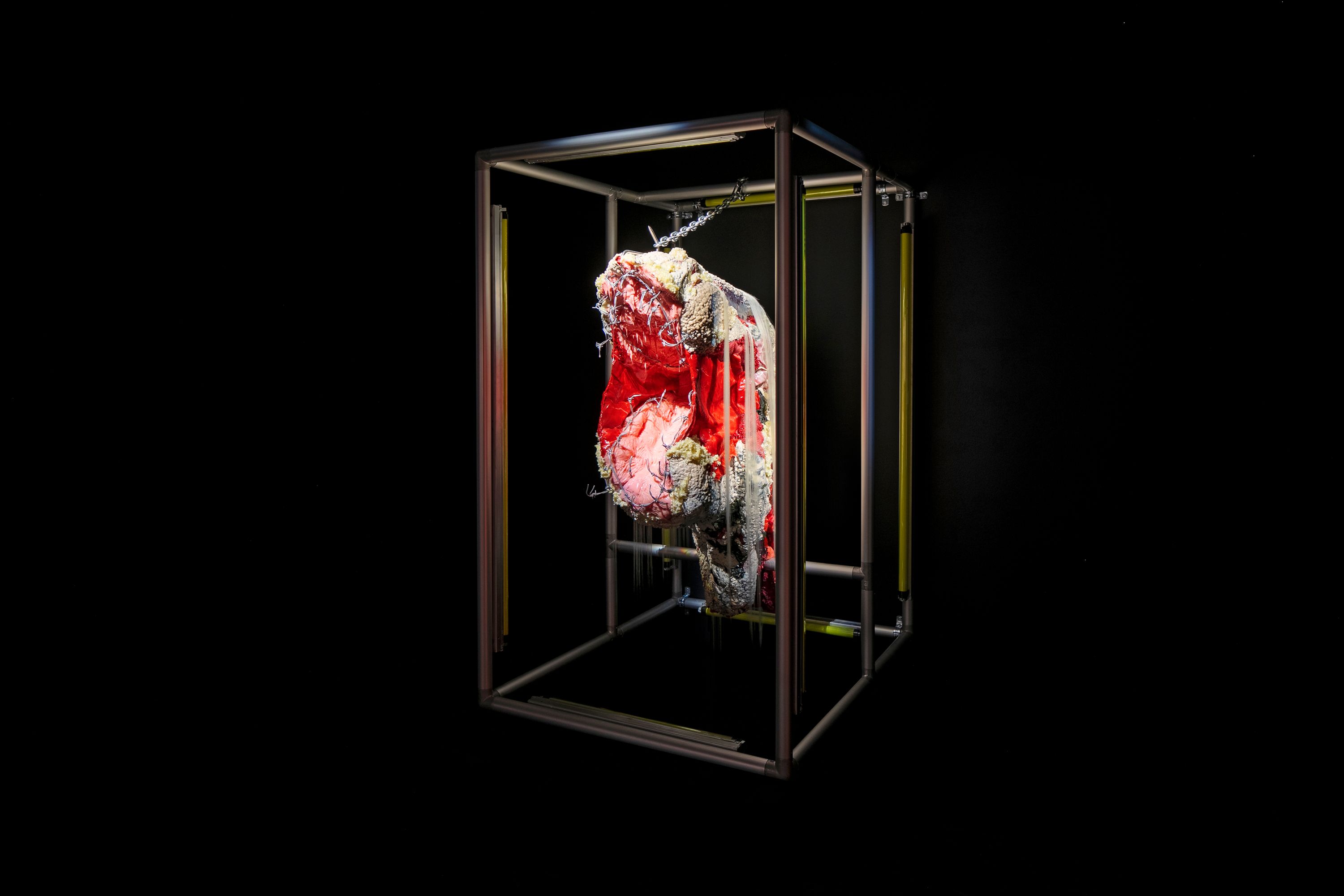
silicone, urethane foam, pearls, Swarovski crystals, barbed wire, hair weave, fluorescent light, aluminum, steel
60.5 x 36 x 45 in
153 x 91.5 x 113.5 cm
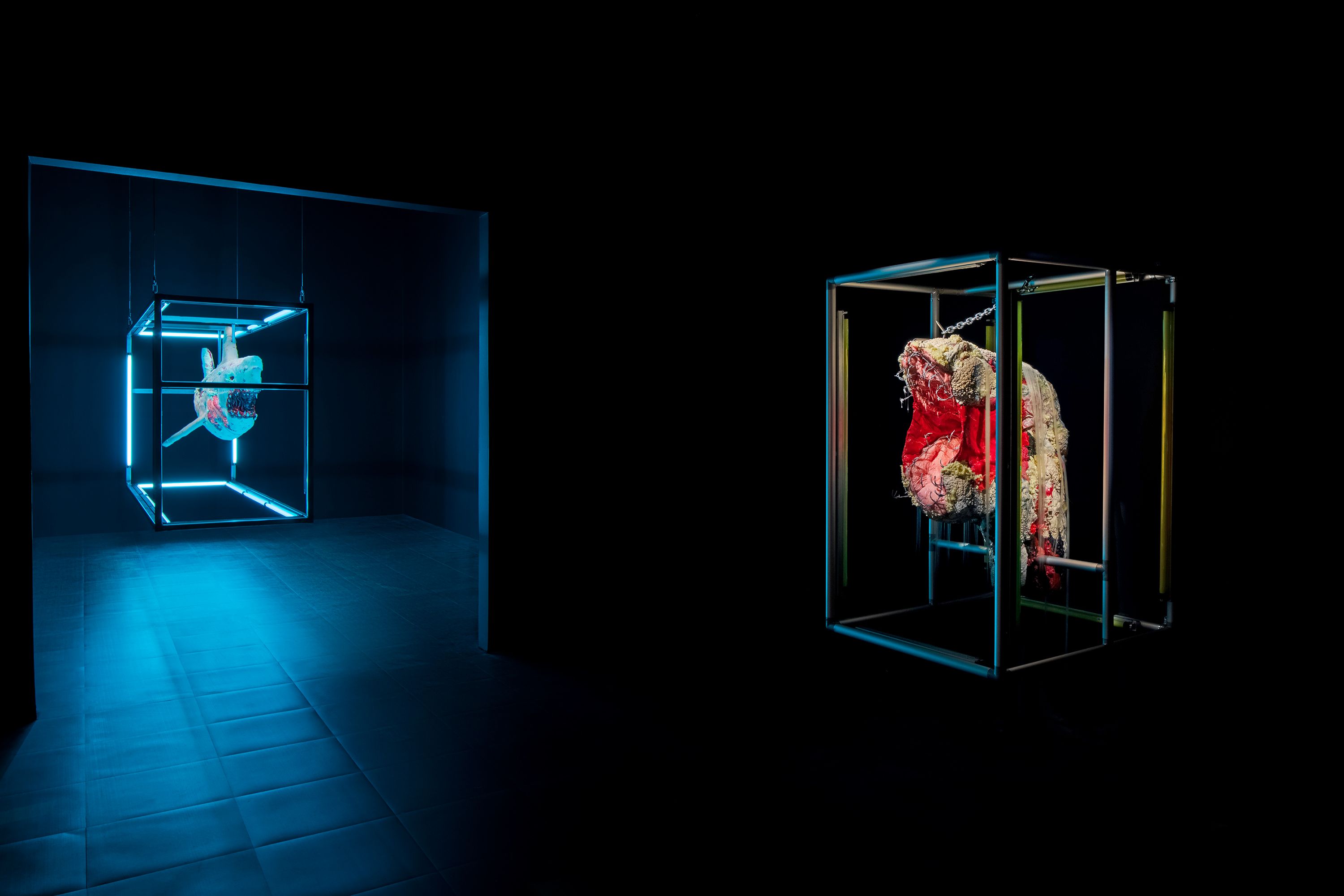
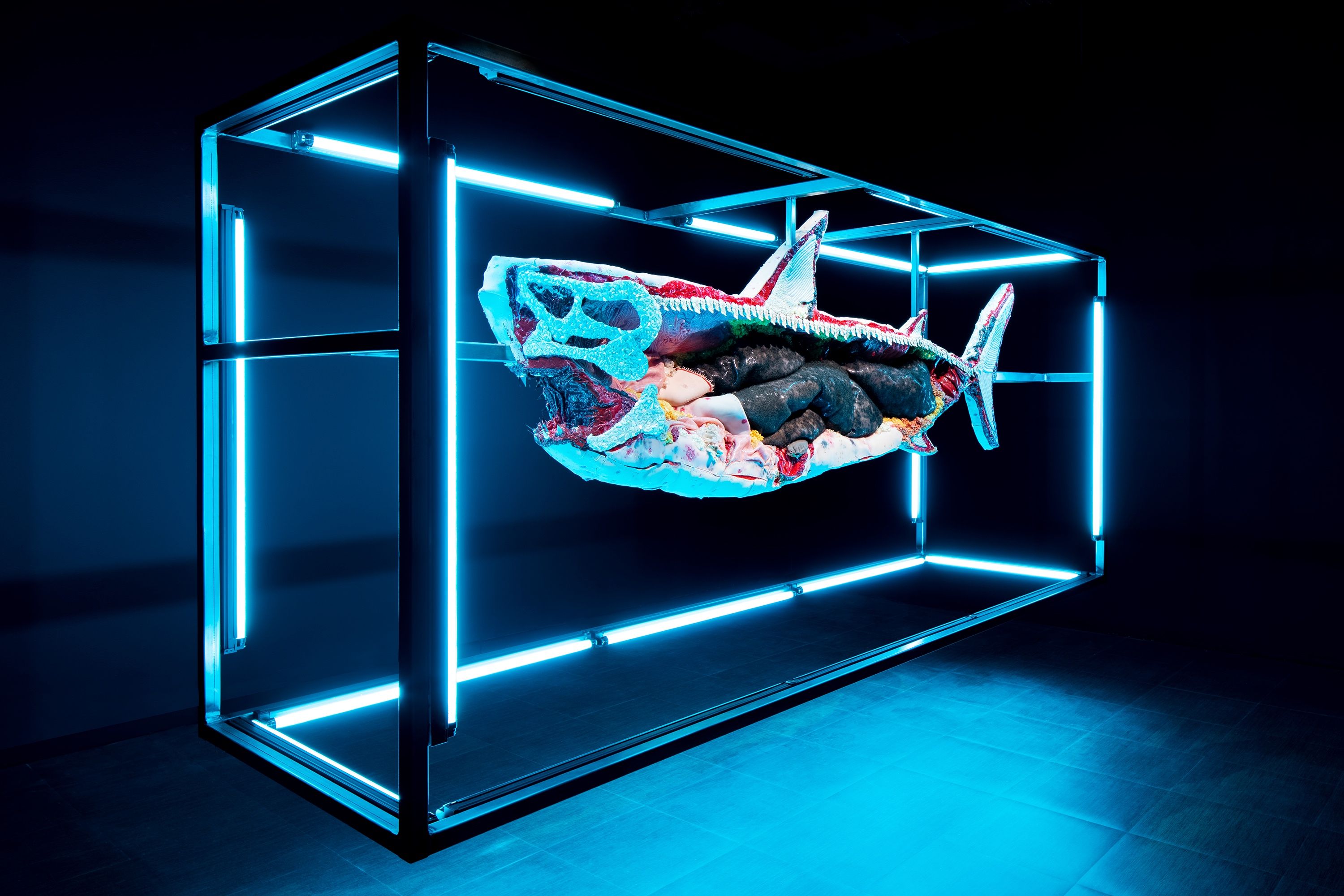
steel, silicone, urethane foam and mixed media
66 x 42 x 156 in
167.5 x 106.5 x 396 cm

steel, silicone, urethane foam and mixed media
66 x 42 x 156 in
167.5 x 106.5 x 396 cm
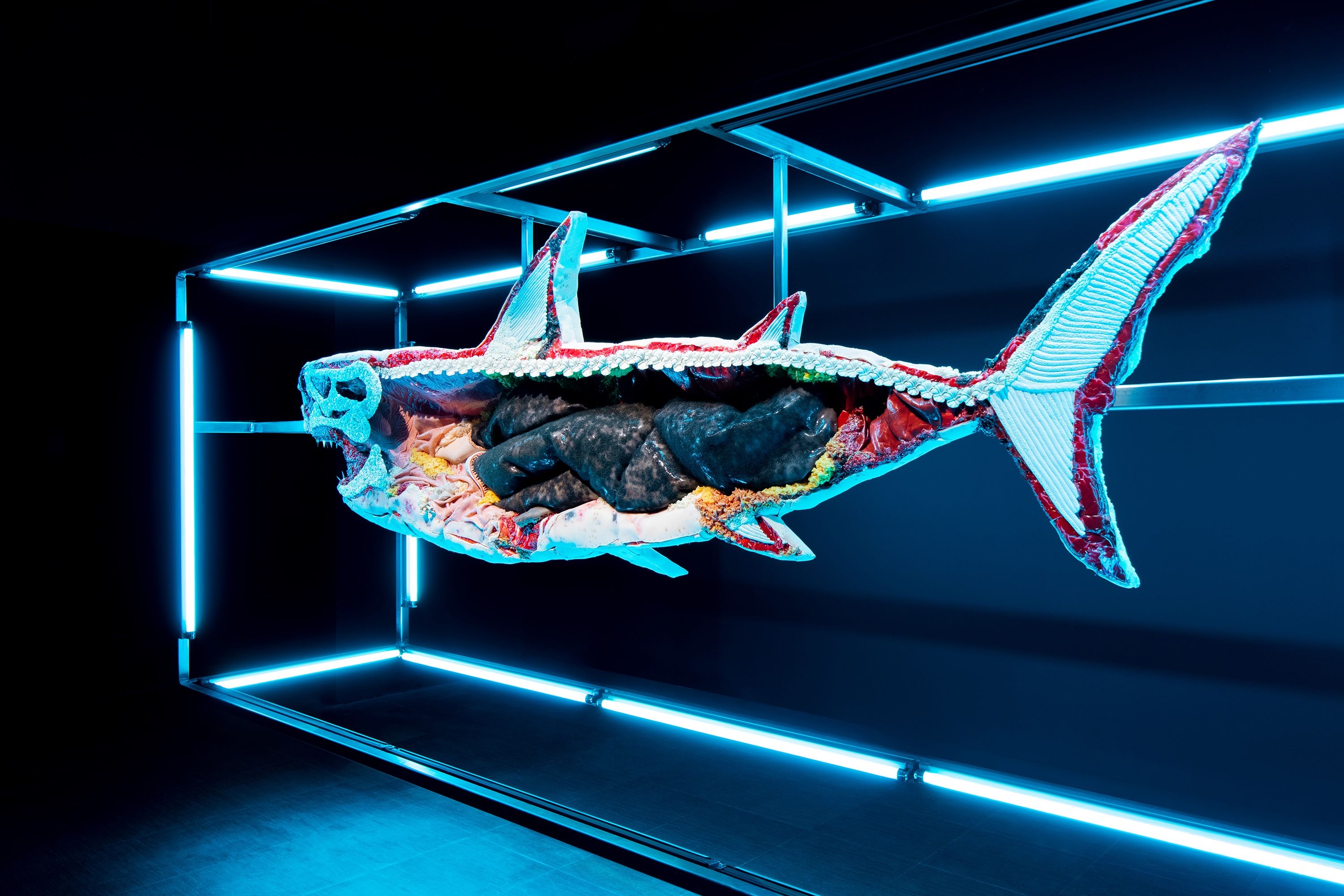
steel, silicone, urethane foam and mixed media
66 x 42 x 156 in
167.5 x 106.5 x 396 cm